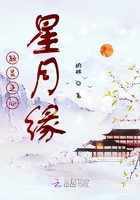SOME DESERT PLANTS
Much of the vegetation that is indigenous to the southwest is unique and can only be seen at its best in the Gila valley in southern Arizona. The locality indicated is in the arid zone and is extremely hot and dry. Under such conditions it is but natural to suppose that all plant life must necessarily be scant and dwarfed, but such is not the fact. Upon the contrary many of the plants that are native to the soil and adapted to the climate grow luxuriantly, are remarkably succulent and perennially green.
How they manage to acquire so much sap amidst the surrounding siccity is inexplicable, unless it is that they possess the function of absorbing and condensing moisture by an unusual and unknown method. It is, however, a beneficent provision of nature as a protection against famine in a droughty land by furnishing in an acceptable form, refreshing juice and nutritious pulp to supply the pressing wants of hungry and thirsty man and beast in time of need.
Another peculiarity of these plants is that they are acanaceous;covered all over with sharp thorns and needles. Spikes of all sorts and sizes bristle everywhere and admonish the tenderfoot to beware. Guarded by an impenetrable armor of prickly mail they defy encroachment and successfully repel all attempts at undue familiarity. To be torn by a cat-claw thorn or impaled on a stout dagger leaf of one of these plants would not only mean painful laceration but, perhaps, serious or even fatal injury.
Notwithstanding their formidable and forbidding appearance they are nevertheless attractive and possess some value either medicinal, commercial or ornamental.
The maguey, or American aloe, is the most abundant and widely distributed of the native plants. It is commonly known as mescal, but is also called the century plant from a mistaken notion that it blossoms only once in a hundred years. Its average life, under normal conditions, is about ten years and it dies immediately after blossoming.
It attains its greatest perfection in the interior of Mexico where it is extensively cultivated. It yields a large quantity of sap which is, by a ****** process of fermentation, converted into a liquor called pulque that tastes best while it is new and is consumed in large quantities by the populace. Pulque trains are run daily from the mescal plantations, where the pulque is made, into the large cities to supply the bibulous inhabitants with their customary beverage. In strength and effect it resembles lager beer, and is the popular drink with all classes throughout Mexico where it has been in vogue for centuries and is esteemed as "the only drink fit for thirsty angels and men."The agave is capable of being applied to many domestic uses.
Under the old dispensation of Indian supremacy it supplied the natives their principal means of support. Its sap was variously prepared and served as milk, honey, vinegar, beer and brandy.
From its tough fiber were made thread, rope, cloth, shoes and paper. The strong flower stalk was used in building houses and the broad leaves for covering them.
The heart of the maguey is saccharine and rich in nutriment. It is prepared by roasting it in a mescal pit and, when done, tastes much like baked squash. It is highly prized by the Indians, who use it as their daily bread. Before the Apaches were conquered and herded on reservations a mescal bake was an important event with them. It meant the gathering of the clans and was made the occasion of much feasting and festivity. Old mescal pits can yet be found in some of the secluded corners of the Apache country that were once the scenes of noisy activity, but have been forsaken and silent for many years.
The fiery mescal, a distilled liquor that is known to the trade as aguardiente, or Mexican brandy, is much stronger than pulque, but less used. Both liquors are said to be medicinal, and are reputed to possess diuretic, tonic and stimulant properties.
Next in importance to the mescal comes the yucca. There are several varieties, but the palm yucca is the most common, and under favorable conditions attains to the proportions of a tree.
Fine specimens of yucca grow on the Mojave desert in California that are large and numerous enough to form a straggling forest.
The tree consists of a light, spongy wood that grows as a single stem or divides into two or more branches. Each branch is crowned by a tuft of long, pointed leaves that grow in concentric circles. As the new leaves unfold on top the old leaves are crowded down and hang in loose folds about the stem like a flounced skirt. When dry the leaves burn readily, and are sometimes used for light and heat by lost or belated travelers.
White threads of a finer fiber are detached from the margins of the leaves that are blown by the wind into a fluffy fleece, in which the little birds love to nest.
A grove of yucca trees presents a grotesque appearance. If indistinctly viewed in the hazy distance they are easily mistaken for the plumed topknots of a band of prowling Apaches, particularly if the imagination is active with the fear of an Indian outbreak.
The wood of the yucca tree has a commercial value. It is cut into thin sheets by machinery which are used for surgeon's splints, hygienic insoles, tree protectors and calendars. As a splint it answers an admirable purpose, being both light and strong and capable of being molded into any shape desired after it has been immersed in hot water. Its pulp, also, makes an excellent paper.
Another variety of yucca is the amole, or soap plant. Owing to the peculiar shape of its leaves it is also called Spanish bayonet. Its root is saponaceous, and is pounded into a pulp and used instead of soap by the natives. It grows a bunch of large white flowers, and matures an edible fruit that resembles the banana. The Indians call it oosa, and eat it, either raw or roasted in hot ashes.














